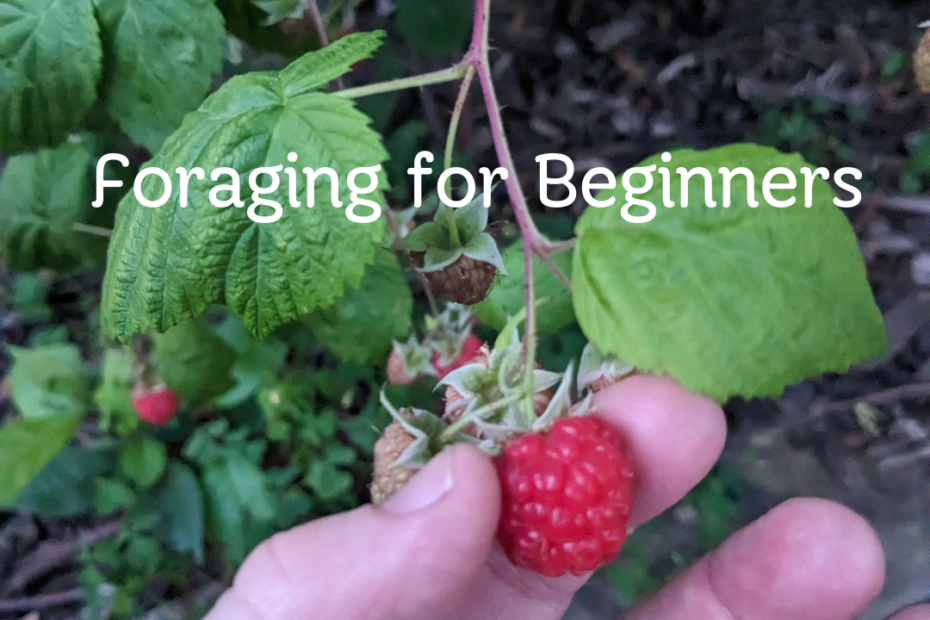*This post may contain affiliate links and I may earn a small commission when you click on the links at no additional cost to you. As an Amazon Affiliate I earn from qualifying purchases. You can read my full affiliate disclosure here.
What do you picture in your mind when someone says “foraging”? Is it the quintessential hipster with a dog-eared mushroom field guide in their back pocket, traipsing through the forest on the hunt for morels and fiddleheads? Is it the movie “Into the Wild” about a young man went into the Alaskan wilderness alone and almost entirely unprepared to survive in the wild? Does foraging sound scary and intimidating, exciting and fun, or maybe just a little weird?
With a few resources and tools, you can start foraging right near where you live, and maybe even in your own backyard. I’m in South Central Ontario, Canada, so my area falls into Eastern & Central North America. Here are five edible plants that are easy to recognize, and grow within a 10 minute walk from my suburban front door –maybe yours too.
Dandelion
I don’t know a single person who doesn’t know what a dandelion looks like. They get their name (“dent de lion” – French for “lion’s tooth”) from the jagged shape of their leaves. They’re one of the first wild edibles you’ll find here in the first few weeks of Spring. When they emerge, it’s just the leaves at first which makes them a little harder to spot, then eventually they form buds, and later, those bright spots of yellow dotting front lawns everywhere, much to the chagrin of my elderly neighbours.
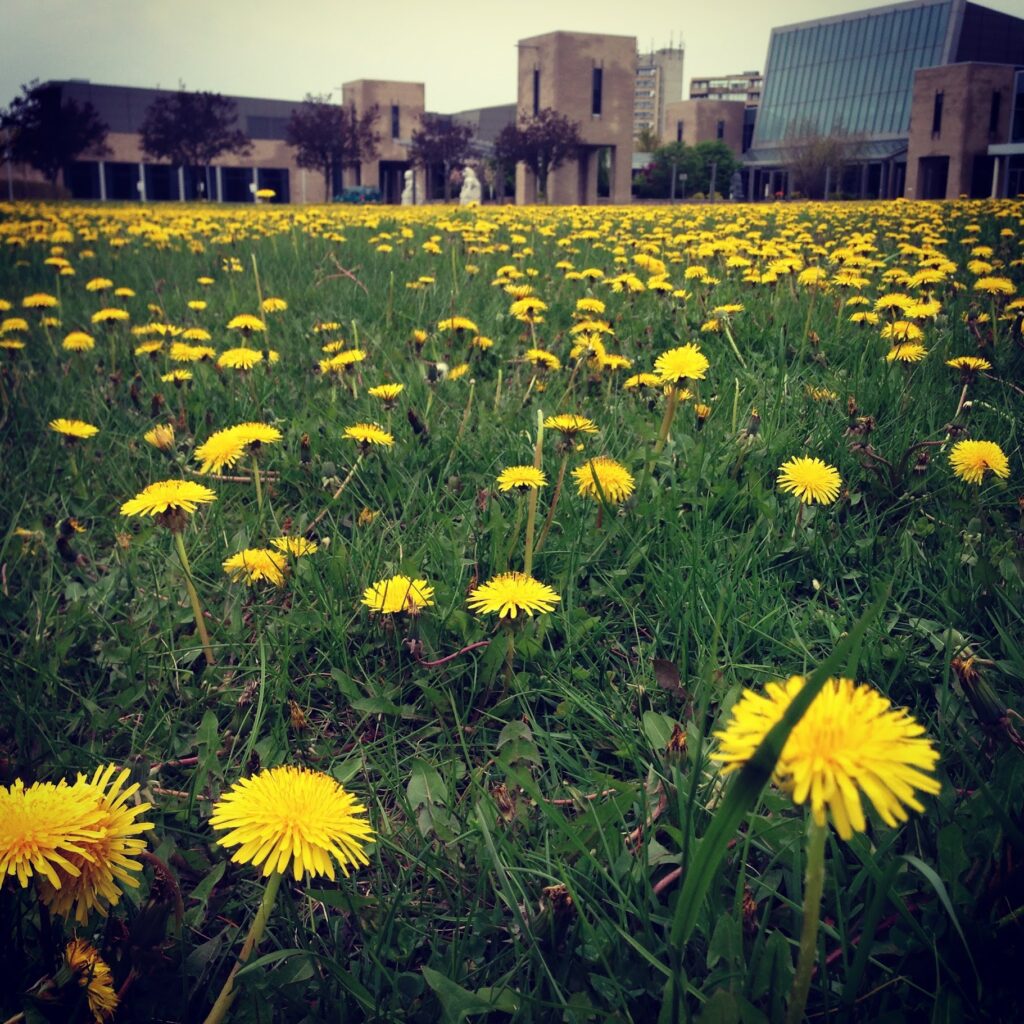
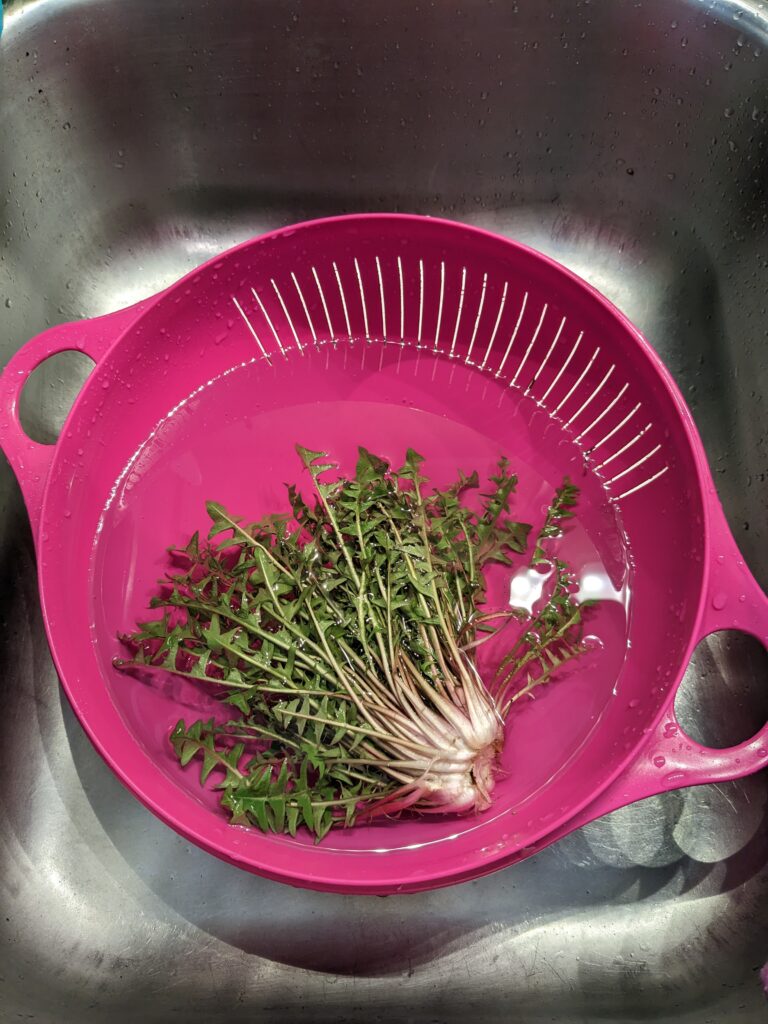
For many, danelions are an annoying, prolific, and tenacious weed, but did you know they used to be cultivated as a food crop? Every part of the dandelion is edible from the flower to the root, you just have to catch them at the right time in their life-cycle. The young leaves, and roots are best gathered in early spring before they produce any flowers. Be sure to find plants that have not been sprayed with pesticides. To dig up the roots, it’s helpful to have a tool like a weed-puller, shovel, or gardening trowel. They often have a very long tap root so you may need to dig deep to get the whole thing. Harvest the roots and young leaves together in the Spring when the leaves are less bitter. Separate the leaves and roots, then wash them thoroughly before using. Blanch the greens, then drain and sautee them with garlic and use in place of spinach. Dry and roast the roots to make dandelion root tea (which tastes very much like coffee).
Staghorn Sumac
If you live in Southern Ontario, there’s a 99.9% chance you’ve seen sumac by the side of the road. It’s a plant that spreads by putting up new shoots every Spring so there’s a lot of it. You can recognize as you pass it in your car on the highway it even in Winter by the deep red cones of fuzzy berries. Up close, you’ll see that the bark is also fuzzy, like the horns of a stag, which is how this variety of Sumac got its name.
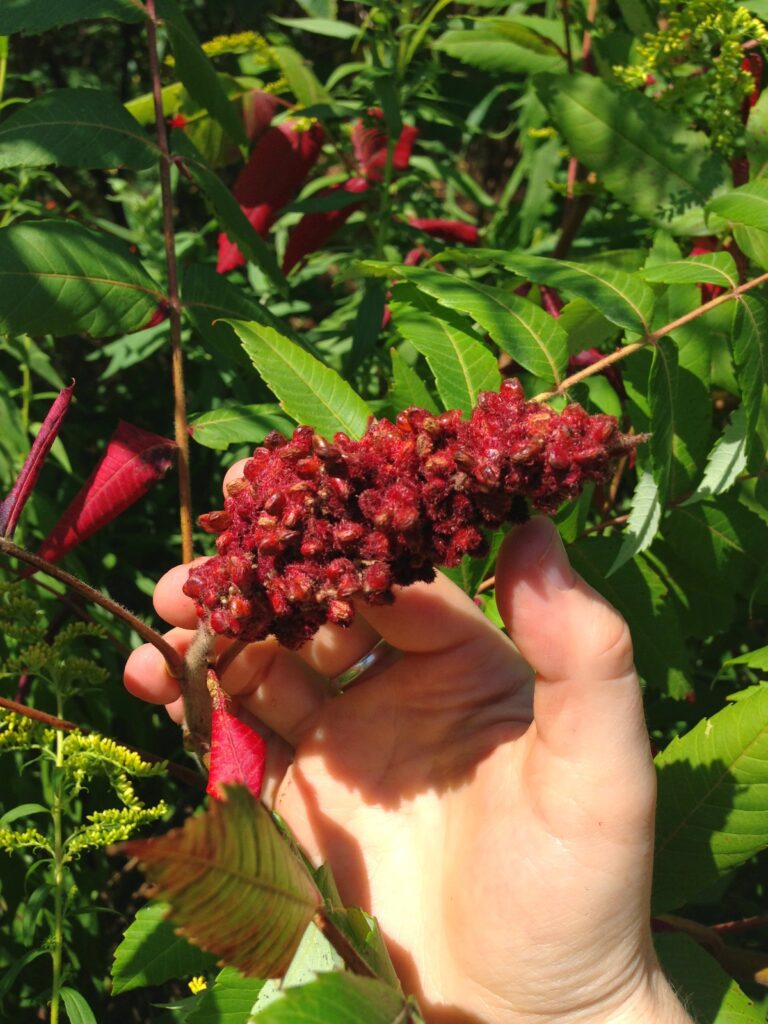
In the summer, the new berries have a mouth-puckering sour flavour, but you have to taste test them before harvesting because that sour flavour can be washed away by the rain. If you find them at the right time when they are nice and sour, don’t wait, grab a bunch and take them home to make sumac-ade, a delightful, pink, lemonade-like drink, and dehydrate some to use as a spice that adds a pop of colour and citrus-like flavour.
Purslane
Another plant with a tangy flavour, purslane is a prolific, native, annual succulent grows in disturbed, sunny soil. It’s a common weed found in gardens, farmers’ fields, roadsides, and even construction sites. The stems are pinkish in colour and the leaves are plump and green.
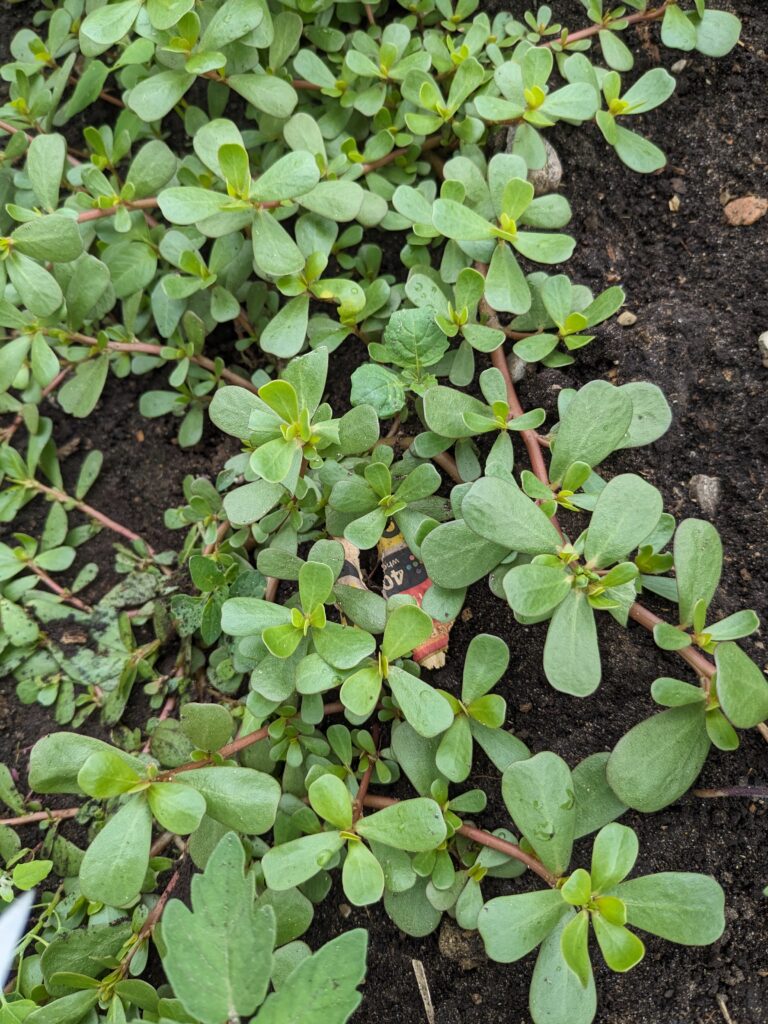
Purslane can be eaten raw or cooked, and is a great addition to salads and smoothies. It packs a nutritional punch, and is very high in iron, so if you find more than you can keep up with, dehydrate and blend into a green powder for a nutritional boost in the Winter.
Raspberries
Raspberries are aggressive spreaders, so if you find a small patch this year, you’ll likely find more next year. Some, like black raspberries, have sharper prickly canes than others so be careful when picking (this is where a berry hook comes in handy). Wild rasperries also tend to be smaller and seedier than cultivated raspberries.
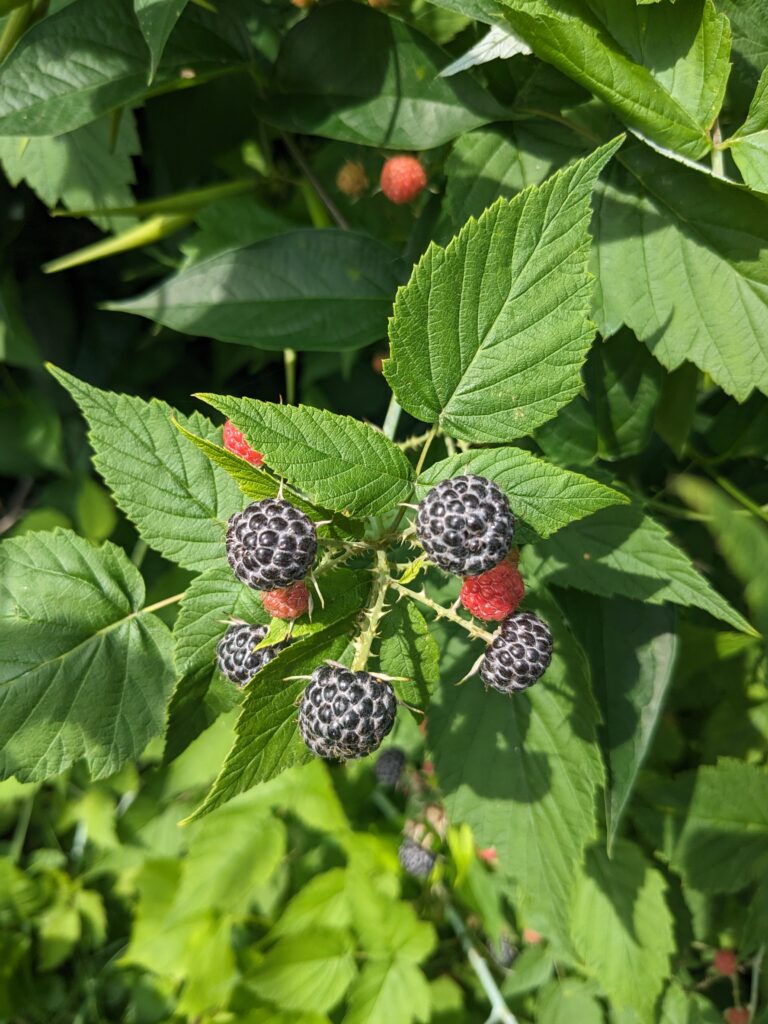
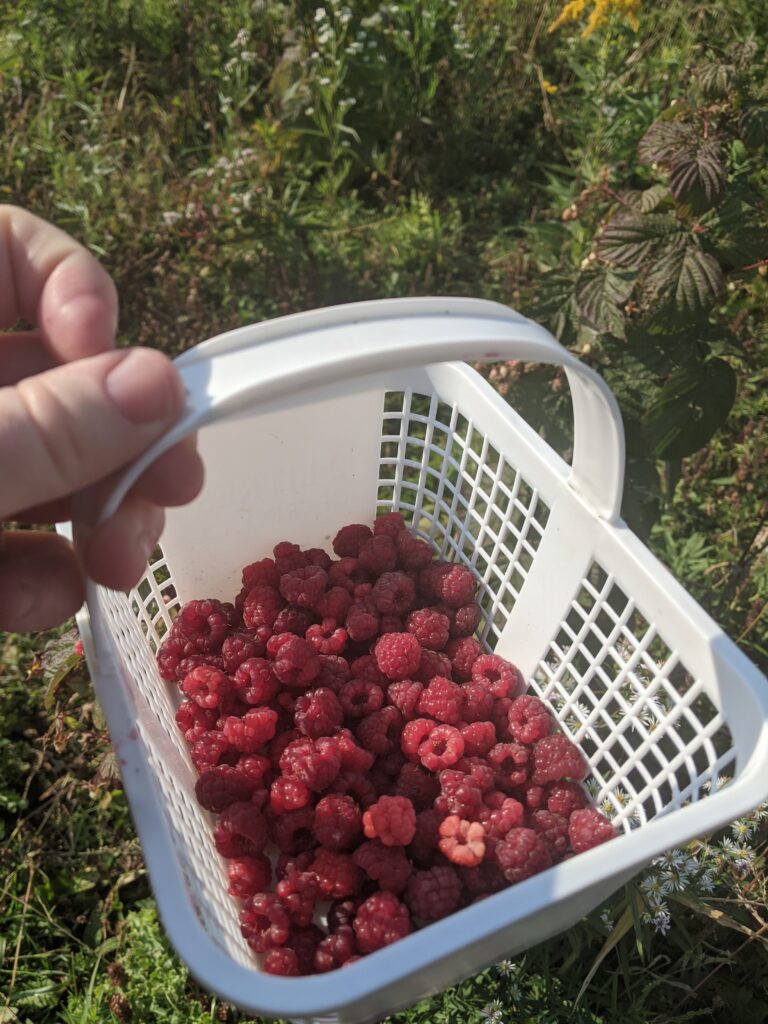
Regardless of type, when ripe, raspberries will put off the plant very easily. If it’s not slipping right off, it’s not ready. Gather as a trail snack or take them home for fresh eating, making pies, muffins, syrups, jams, etc.
Lambsquarters
Lambsquarters are an herb with alternating leaves shaped like a jagged arrowhead or goose’s foot. The leaves have a powdery coating, particularly the new shoots. The stems are thick and hairless, and can grow up to 10 inches tall. Like purslane, they tend to grow in sunny, disturbed soil, and are considered to be weeds by most.

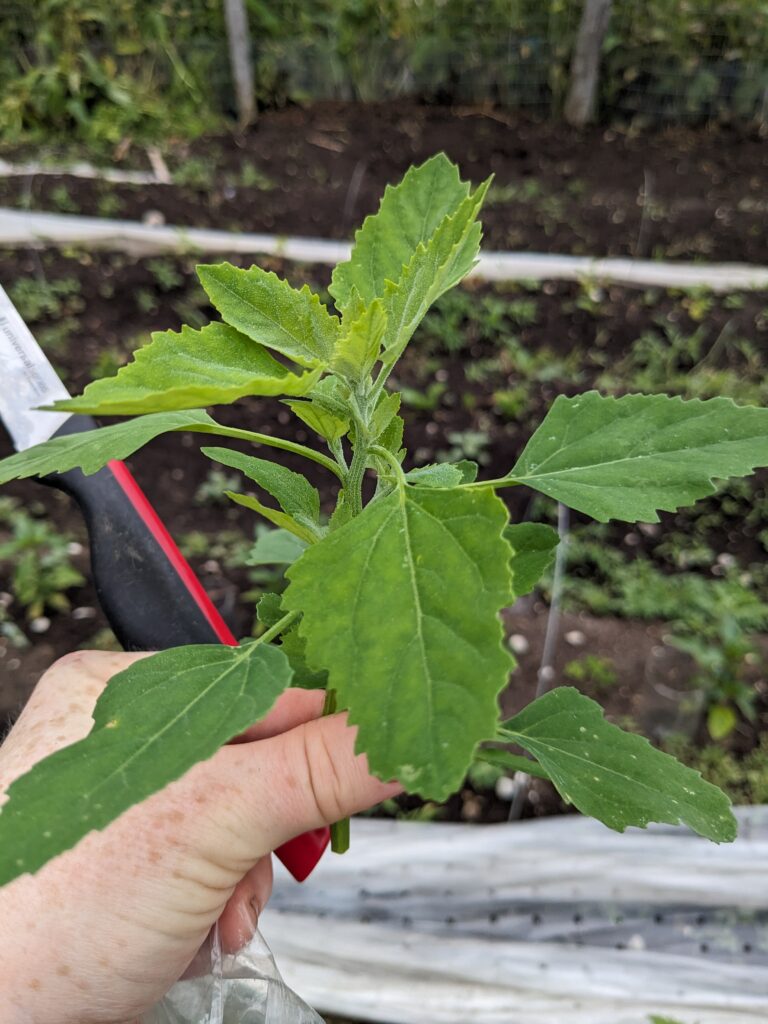
Gather the more tender tops of the plants in the Spring and Summer and eat them raw or cooked, just like spinach.
Foraging Books & Tools
If you’re interested in foraging I highly recommend grabbing a few books and tools. Start with The Neighborhood Forager, which is a great introductory guide that includes recipes for some of the wild foods you can find. When you’re ready for a more comprehensive field guide, grab a copy of the Peterson Field Guide for your region so you have a compact, lightweight book to carry with you when you’re out, and Sam Thayer’s Field Guide to Edible Wild Plans of Eastern & Central North America for a more comprehensive (but heavy!) field guide full of colour photos to train your eyes and cross reference to confirm your finds when you get home.
In addition to a field guide, there are a few tools I carry with me when I go foraging outside of my own yard. Everything except my basket fits in my backpack (just a regular school backpack, nothing fancy) along with my bottle of water.
- Basket (thrifted from Value Village) for gently carrying the things I find
- Some containers for smaller and more delicate things like berries
- Expandable pole with fruit picker and berry hook attachments for picking wild apples, pulling mulberry branches closer when I can’t reach (at 5’0″, it happens a lot), and pulling thorny brambles out of the way to get the rasperries behind them.
- Small utility knife, mushroom knife, or swiss army knife
- Notebook for keeping track of what I’ve found and where
- Cloth bags and paper bags
- Camera or phone with camera (location services turned on can help you pinpoint locations of photos you took)
- I recently added a small portable, foldable shovel to my tools because every time I wanted to dig up some chicory roots (a great coffee flavour enhancer or replacement!) I had nothing to dig with! It’s very lightweight and easy to throw into my backpack

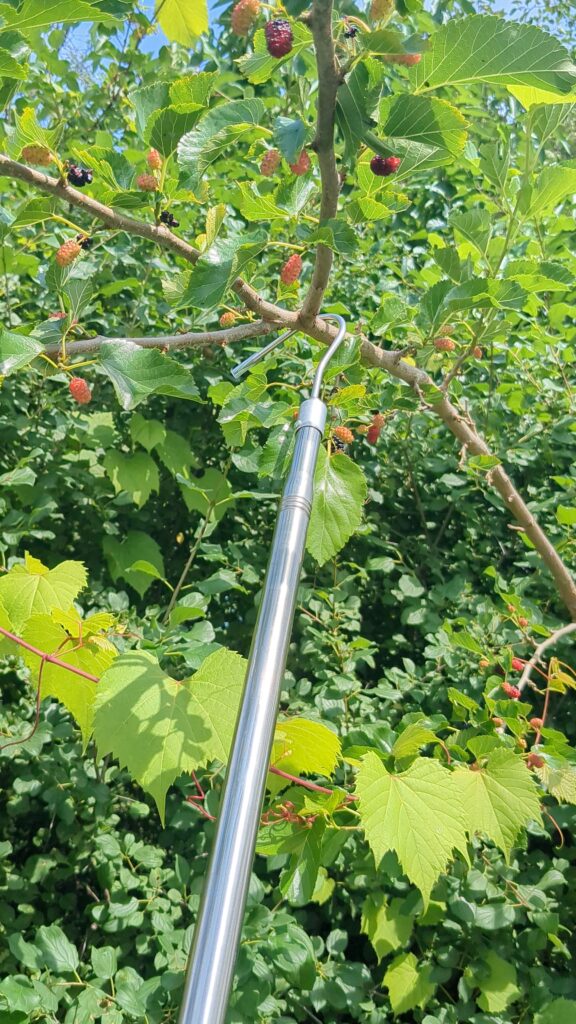
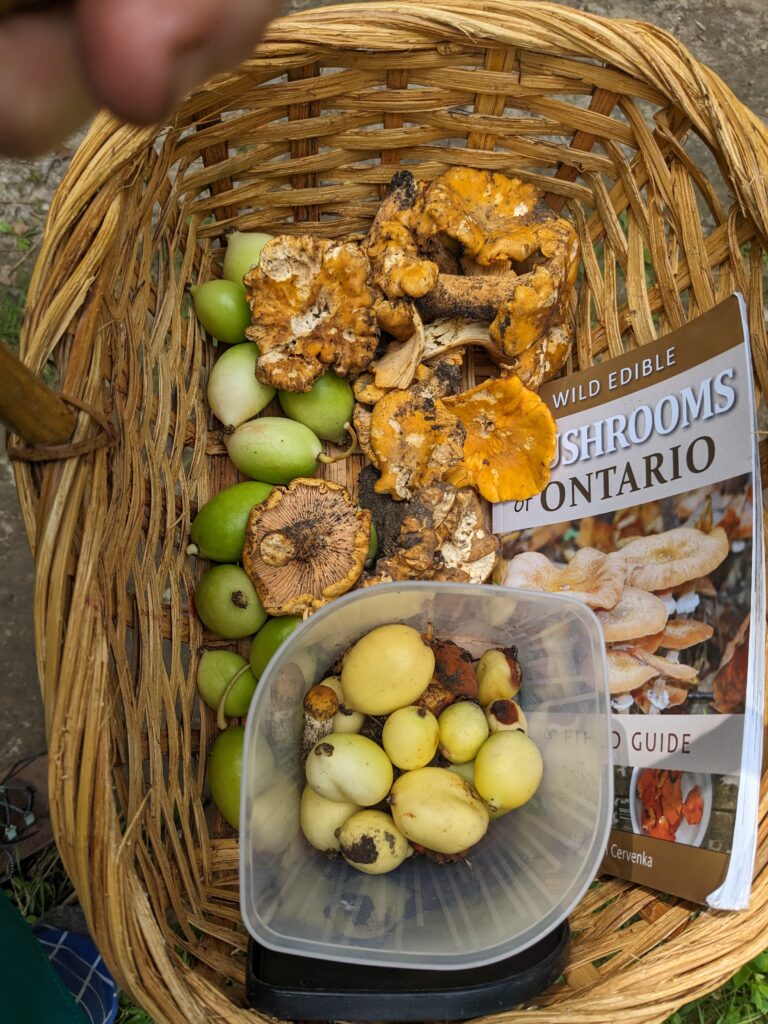
The Most Important Rule
The most important rule of foraging is never eat anything you can’t 100% positively identify. I go first by recognition, then check two sources to confirm (usually a plant identification app like PlantNet, and one of my field guides)
Now, get out there and (safely) forage!
